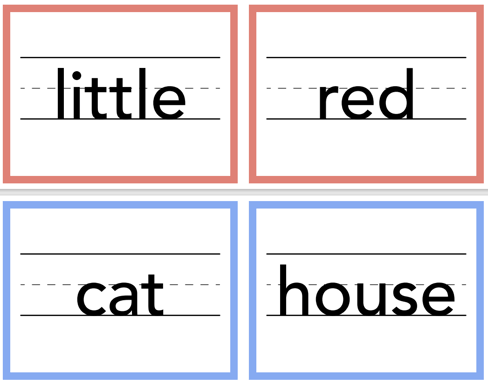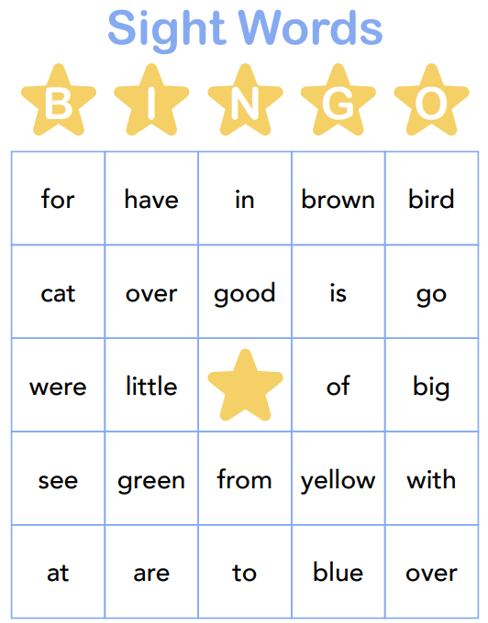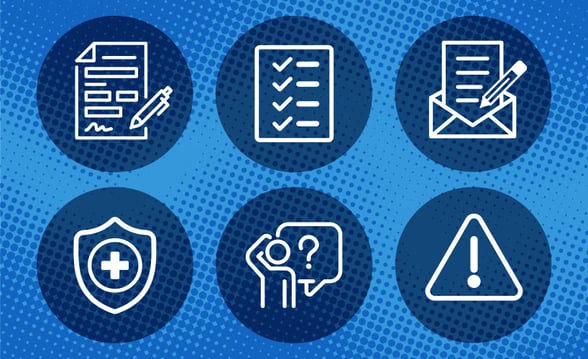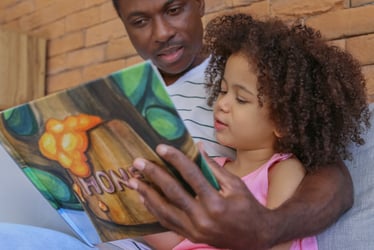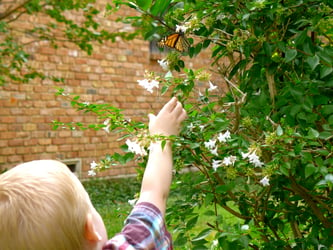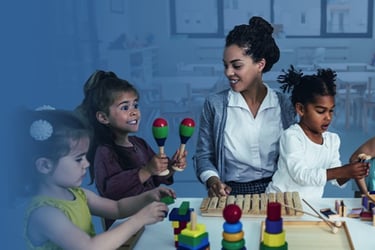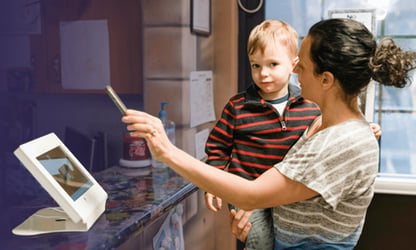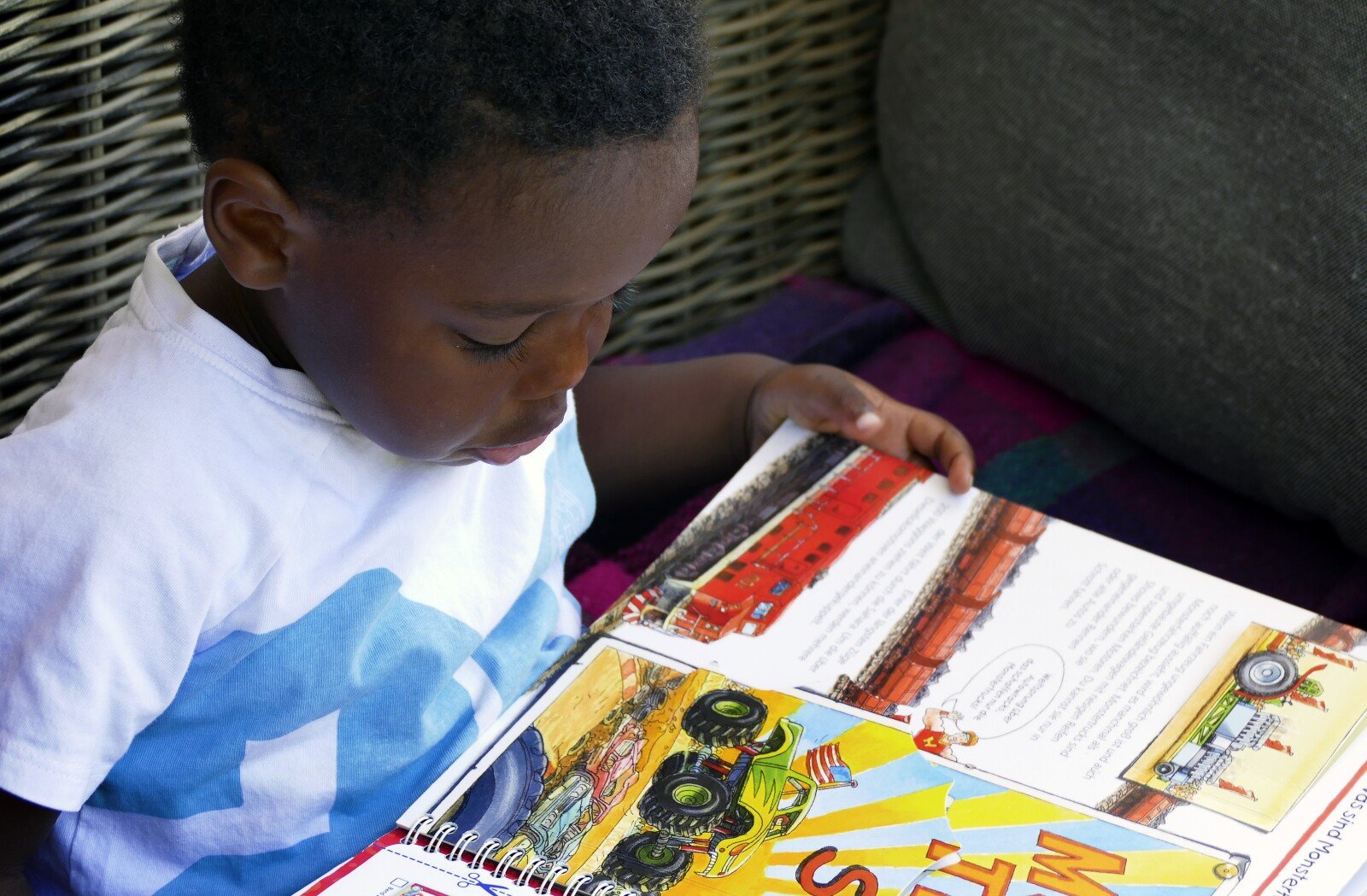
Imagine transforming each preschooler's learning journey into an adventure brimming with enchantment and discovery. Discover a treasure trove of literacy activities designed specifically for little learners, where each game and storytelling session is a steppingstone toward mastering language and reading skills. Dive into a world where phonetic awareness, letter recognition and narrative skills come alive, all while instilling a profound love for reading. Unveil the secrets to a brighter educational future for your preschooler with activities for building a solid foundation in literacy that promise joy.
To see more engaging content for your preschool or daycare, check out our daycare newsletter blog!
Table of Contents
- What Is a Literacy Activity for Preschoolers?
- What Are the Benefits of Engaging Language and Literacy Activities for Preschoolers?
- The Best Language and Literacy Activities for Preschoolers
- How Do You Teach Preschool Literacy?
- Get 70+ Editable and Printable Templates for Almost Every Preschool Situation
- References
What Is a Literacy Activity for Preschoolers?
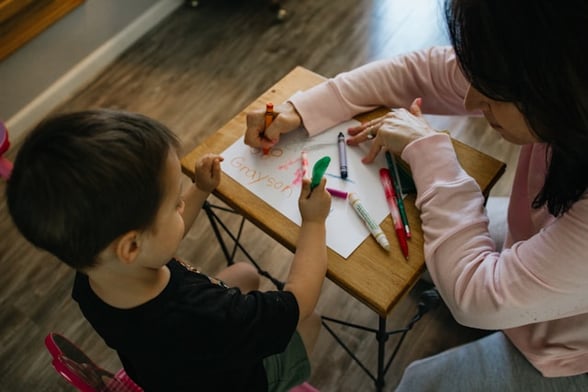
A literacy activity for preschoolers is an educational experience designed to promote the development of essential language and reading skills. These activities focus on building foundational competencies such as phonetic awareness, letter recognition, vocabulary and narrative comprehension. Examples of engaging literacy activities for preschoolers include rhyming games, storytelling sessions and interactive reading exercises. A successful literacy lesson must be engaging, age-appropriate and effectively reinforce key concepts while fostering a love of reading, language and learning.
What Are the Benefits of Engaging Language and Literacy Activities for Preschoolers?
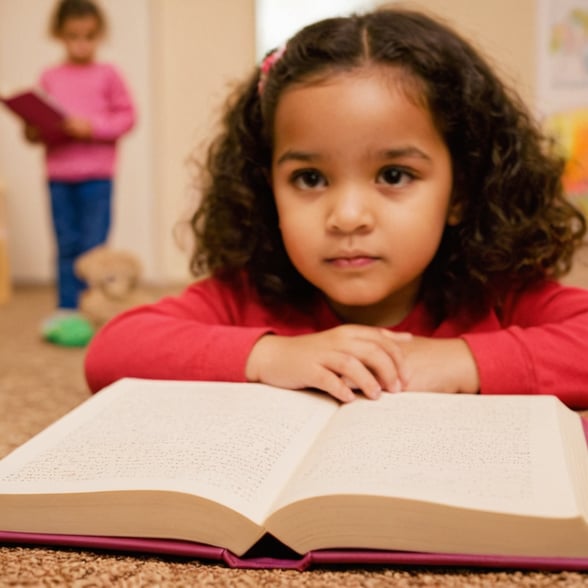
Engaging language and literacy activities offer numerous benefits for preschoolers:
- Enhance cognitive development and problem-solving skills (Martin-Pitt Partnership for Children, n.d.).
- Improve social and emotional skills through interaction and collaboration (Mielonen & Paterson, 2009).
- Expand vocabulary and language comprehension (Voyager Sopris Learning, n.d.).
- Develop phonological awareness, a crucial predictor of future reading success.
- Cultivate a lifelong love for reading and learning.
- Prepare children for the challenges of formal schooling.
The Best Language and Literacy Activities for Preschoolers
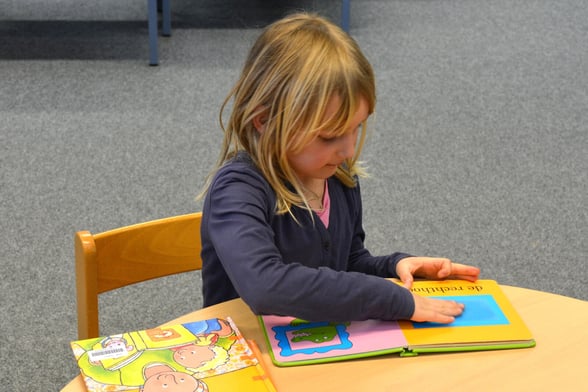
Phonetic Awareness Activities
Phonetic awareness is a critical foundational skill for early learners, as it lays the groundwork for reading and writing success. Research has shown that children who have strong phonetic awareness skills are better equipped to learn to read and write (SEDL, 2002). These activities promote oral language development by helping children recognize and play with the sounds in words.
1. Rhyming Basket
Overview: In this activity, children match rhyming objects pulled from a basket, helping them develop an ear for similar sounds in words.
Materials:
- A basket or container
- Pairs of small objects that rhyme (e.g., cat/hat, fox/box, bear/pear)
Setup:
- Gather pairs of rhyming objects.
- Place all objects in the basket or container.
Instructions:
- Have the child pull an object from the basket.
- Ask the child to name the object.
- Encourage the child to find another object in the basket that rhymes with the first object.
- If the child struggles, provide the rhyming word and have them find the corresponding object.
- Continue until all rhyming pairs have been matched.
2. Silly Syllables
Overview: This game helps children break words down into syllables, promoting an understanding of word structure and sounds.
Materials:
- None required
Setup:
- Think of a list of multi-syllable words familiar to the children (e.g., banana, elephant, umbrella).
Instructions:
- Say a word aloud, emphasizing each syllable (e.g., "ba-na-na").
- Have the children repeat the word, clapping for each syllable.
- Ask the children to count the number of syllables in the word.
- Repeat with additional words, encouraging the children to say the words and clap the syllables independently.
3. Sound Detective
Overview: This activity helps children identify initial sounds in words, a key phonetic awareness skill.
Materials:
- A variety of objects or pictures that start with different sounds
Setup:
- Gather a variety of objects or pictures with distinct initial sounds.
Instructions:
- Display the objects or pictures.
- Choose a target sound, such as /s/.
- Ask the children to find all the objects or pictures that start with the target sound.
- Have children take turns selecting an object or picture and saying its name, emphasizing the initial sound.
- Repeat with different target sounds.
Alphabet Knowledge Activities
Alphabet knowledge involves recognizing letters of the alphabet, knowing their names and understanding the sounds they represent. Research indicates that alphabet knowledge is one of the strongest predictors of later reading success (Piasta & Wagner, 2010). These activities help children develop familiarity with letters and their sounds.
1. Alphabet Puzzles
Overview: Alphabet puzzles help children recognize letter shapes and practice letter-sound associations.
Materials:
- Alphabet puzzles with each piece representing a letter
- Optional: Pictures representing words starting with each letter
Setup:
- Choose age-appropriate alphabet puzzles.
- If using pictures, gather images of words starting with each letter.
Instructions:
- Present the alphabet puzzle to the child.
- Encourage the child to match the letter pieces to their correct spots in the puzzle.
- As the child places each piece, have them name the letter and its sound.
- If using pictures, have the child match the picture to the corresponding letter, emphasizing the initial sound.
2. Letter Tracing
Overview: Letter tracing activities help children develop letter recognition and build fine motor skills needed for writing.
Materials:
- Printable letter tracing worksheets
- Writing utensils (e.g., crayons, markers, pencils)
- Optional: Sand or salt trays, finger paints
Setup:
- Print out letter tracing worksheets or create your own.
- Gather writing utensils.
- If using sand/salt trays or finger paints, prepare these materials.
Instructions:
- Demonstrate how to trace a letter, verbalizing the letter name and sound.
- Have the child trace the letters with their finger or a writing utensil, saying the letter name and sound as they trace.
- Encourage the child to trace the letters multiple times for practice.
- Optional: Have children trace letters in sand/salt trays or with finger paints for a multi-sensory experience.
3. Letter-Sound Matching Game
Overview: This game reinforces letter-sound associations and helps children connect letters to words.
Materials:
- Letter cards (uppercase or lowercase)
- Picture cards representing words starting with each letter
Setup:
- Create or print letter cards and corresponding picture cards.
- Arrange letter cards face-up on a table or the floor.
- Place picture cards in a stack, face-down.
Instructions:
- Have the child draw a picture card from the stack.
- Ask the child to name the object in the picture, emphasizing the initial sound.
- Encourage the child to find the one letter card that matches the initial sound of the word.
- Have the child place the picture card next to the corresponding letter card.
- Repeat until all picture cards have been matched or as time allows.
Print Awareness Activities
Print awareness involves understanding the function and purpose of written language. Children learn that print carries meaning and they develop an understanding of how books work. Research has shown that print awareness is a strong predictor of later reading achievement (Ohio Department of Education, 2020). These engaging activities help children develop print awareness skills and prepare them to begin reading.
1. Print Scavenger Hunt
Overview: This activity encourages children to recognize print in their environment, reinforcing the idea that print carries meaning.
Materials:
- A collection of print materials (e.g., books, magazines, labels, signs)
- A print scavenger hunt checklist
Setup:
- Create a checklist of print items for children to find (e.g., a stop sign, a food label, a book title).
- Place print materials around the room or outdoor area.
Instructions:
- Explain to the children that they will be going on a print scavenger hunt to find different types of print in their environment.
- Give each child or pair of children a checklist.
- Have children explore the area and check off items on their list as they find them.
- Encourage children to "read" the print they find, even if they are not yet reading conventionally.
- Discuss the different types of print found and their purposes.
2. Book Handling Skills
Overview: This activity teaches children how to handle books properly and reinforces concepts of print.
Materials:
- A variety of age-appropriate picture books
Setup:
- Select a range of picture books with clear text and engaging illustrations.
Instructions:
- Demonstrate how to handle a book properly (e.g., holding it right-side up, turning pages from left to right).
- Discuss the parts of a book (e.g., front cover, back cover, spine, pages).
- Point out the title, author and illustrator on the cover and title page.
- Have children practice holding and "reading" books independently, encouraging them to turn pages and point out features they notice.
- Discuss how the illustrations relate to the text on each page.
3. Environmental Print Bingo
Overview: This game helps children recognize familiar words and logos in their environment.
Materials:
- Bingo cards featuring environmental print (e.g., logos, signs)
- Matching environmental print cards
- Bingo markers (e.g., pennies, buttons, stickers)
Setup:
- Create bingo cards and matching cards featuring familiar environmental print.
Instructions:
- Give each child a bingo card and markers.
- Show an environmental print card and have children name the word or logo.
- Children search their bingo cards for the matching item and place a marker on it if found.
- Continue calling out items until a child completes a predetermined pattern (e.g., a straight line, an X shape) and calls out "Bingo!"
- Have the winner "read" the items that form their winning pattern.
Vocabulary Development Activities
Building a rich vocabulary is essential to promote literacy development. You may have heard of Dolch sight words in reference to early literacy teaching. Professor Edward William Dolch (1936) identified 220 common sight words that appear frequently in children's books. When children master these sight words, they have the foundation they need to master the children books they read. It is unlikely that a preschooler will be able to master all 220 words by sight. For preschoolers, learning a foundational set of about 40 sight words can set them up for success in kindergarten (Reading Eggs, 2016; Shanahan, 2017). These activities help children expand their vocabularies and develop sight word recognition, a precursor to reading and writing skills.
1. Word Wall
Overview: A word wall helps children build vocabulary and sight word recognition through visual exposure. It's a fun and engaging preschool learning activity.
Materials:
- A designated wall space
- Index cards or labels
- Markers
Setup:
- Choose a wall space to create your word wall.
- Write target vocabulary words or sight words on index cards or labels.
Instructions:
- Introduce a new word to the children, discussing its meaning and using it in context.
- Add the word to the word wall.
- Encourage children to use the word in their conversations and writing throughout the week.
- Review words on the wall regularly, having children read them aloud.
- Add new words to the wall as children demonstrate mastery of the current words.
2. Sight Word Treasure Hunt
Overview: In this activity, children search for hidden sight word flashcards around the classroom or play area.
Materials:
- Sight word flashcards
- Paper and pencils
- Treasure chest or box
Setup:
- Hide sight word flashcards around the play area
- Provide each group with paper and pencils
- Place a treasure chest in a central location
Instructions:
- Divide children into small groups
- Have groups search for hidden flashcards
- Read words aloud, record them, and collect flashcards
- Provide assistance as needed
- Review sight words as a whole group
- Celebrate the children's success
3. Sight Word Hopscotch
Overview: This active game helps children practice identifying and reading sight words.
Materials:
- Sidewalk chalk
- A list of target sight words
Setup:
- Use sidewalk chalk to draw a hopscotch board on the ground.
- Write a sight word in each square of the hopscotch board.
Instructions:
- Have children take turns hopping through the hopscotch board.
- As they land on each square, have them read the sight word aloud.
- If a child struggles with a word, provide support and have them repeat the word before moving on.
- Play continues until all children have had a turn.
- Optional: Have children spell the words as they hop for an extra challenge.
4. Sight Word Bingo
Overview: Sight Word Bingo is a fun and engaging game that helps children practice recognizing and reading common sight words.
Materials:
- Bingo cards with sight words (create multiple cards with different word combinations)
- Sight word flashcards (used for calling out words)
- Markers or tokens for covering words on the bingo cards
Setup:
- Create bingo cards with a grid of sight words, ensuring each card has a unique combination of words.
- Prepare a set of sight word flashcards to be used for calling out words during the game.
- Provide each child with a bingo card and markers or tokens.
Instructions:
- Explain the rules of Sight Word Bingo to the children.
- Give each child a bingo card and markers or tokens.
- Shuffle the sight word flashcards and draw one at a time, calling out the word clearly.
- Have the children look for the called word on their bingo card. If they have it, they should cover the word with a marker or token.
- Continue calling out words until a child achieves a bingo - which can be a horizontal, vertical, or diagonal line of covered words, or even a full card, depending on the rules agreed upon.
- The first child to achieve a bingo calls out "Bingo!" and reads the winning sight words aloud to confirm their win.
- Play several rounds, allowing children to exchange cards between games for variety.
5. Vocabulary Charades
Overview: This play activity helps children learn new vocabulary words through acting and guessing.
Materials:
- A list of age-appropriate vocabulary words
- Optional: Picture cards representing the vocabulary words
Setup:
- Choose vocabulary words that can be easily acted out.
- Write the words on slips of paper or gather picture cards representing the words.
Instructions:
- Divide children into two teams.
- Have one child from a team draw a vocabulary word or picture card.
- The child acts out the word for their team to guess.
- If the team guesses correctly within a set time limit (e.g., 30 seconds), they earn a point.
- Teams take turns acting and guessing until all words have been used.
- Review the vocabulary words with the group, discussing their meanings and using them in sentences.
Narrative Skills and Comprehension Activities
Narrative skills involve understanding story structures and being able to comprehend and retell stories. Research indicates that narrative skills in preschool are predictive of later reading comprehension abilities (Akmese & Kanmaz, 2021). These activities help children develop narrative skills and comprehension.
1. Story Sequencing
Overview: This activity supports effective literacy by helping children understand story structure and sequence events in order.
Materials:
- A familiar picture book
- Story sequencing cards (images representing key events in the story)
Setup:
- Choose a picture book with a clear sequence of events.
- Create or print out story sequencing cards that represent key events in the story.
Instructions:
- Read the picture book aloud to the children.
- Discuss the main events of the story.
- Mix up the story sequencing cards and have children work together to put them in the correct order.
- Have children retell the story using the sequencing cards as a guide.
- Encourage children to use story language (e.g., "once upon a time," "first," "next," "finally") as they retell the story.
2. Story Retelling with Props
Overview: This is a fun literacy activity for preschoolers that encourages them to retell stories using props, promoting comprehension and expressive language skills.
Materials:
- A familiar picture book
- Props related to the story (e.g., stuffed animals, puppets, toys)
Setup:
- Choose a picture book that lends itself well to retelling with props.
- Gather props that represent characters, objects or settings from the story.
Instructions:
- Read the picture book aloud to the children.
- Discuss the main characters, events and setting of the story.
- Introduce the props and explain how they relate to the story.
- Have children take turns retelling the story using the props.
- Encourage children to use story language and include key details in their retellings.
- Provide support and prompting as needed to help children maintain the sequence and include important elements of the story.
3. Story Comprehension Card Game
Overview: This is one of the best literacy activities for preschoolers because it helps children practice answering questions about stories, promoting comprehension skills.
Materials:
- A set of story comprehension cards (each card features a question about a story element, such as characters, setting, problem or solution)
- A familiar picture book
Setup:
- Create a set of story comprehension cards based on the selected picture book.
Instructions:
- Read the picture book aloud to the children.
- Discuss the main elements of the story (characters, setting, problem, solution).
- Divide children into small groups or pairs.
- Give each group a set of story comprehension cards.
- Have children take turns drawing a card and asking their group the question on the card.
- The group works together to answer the question, referring back to the story as needed.
- Continue playing until all cards have been used or a predetermined time limit is reached.
- Review the questions and answers with the whole group, providing clarification and additional discussion as needed.
Early Writing and Fine Motor Skills Activities
Developing the ability to write involves fine motor skills as well as understanding that writing is a form of communication. Related fun and engaging literacy activities can include drawing, scribbling, forming letters with playdough or using fingerpaints.
1. Alphabet Playdough Mats
Overview: Alphabet playdough mats combine fine motor skill development with letter recognition. Children use playdough to form letters, reinforcing the shapes and sounds of the alphabet and preparing them to write letters.
Materials:
- Printable alphabet mats
- Playdough in various colors
- Rolling pins (optional)
- Letter-shaped cookie cutters (optional)
Setup:
- Print out alphabet mats, laminate if desired for durability.
- Set out playdough and any additional tools like rolling pins or cookie cutters.
- Place mats and materials on a table or work surface.
Instructions:
- Introduce the alphabet mats and demonstrate how to form a letter using playdough.
- Encourage the child to select a mat and use the playdough to trace the letter shape.
- As they work, say the letter name and sound, associating the shape with the spoken letter.
- Allow the child to experiment with creating the letter independently.
- Continue with additional letters, providing guidance and support as needed.
2. Fingerprint Letters
Overview: This activity uses fingerpaints to create letter shapes, engaging children in a sensory and artistic experience while learning about letters and sounds.
Materials:
- Washable finger paints in various colors
- Heavyweight paper
- Letter stencils or printable letter templates (optional)
- Smocks or old T-shirts for children
- Wet wipes or damp cloths for cleanup
Setup:
- Cover work area with a protective tablecloth or newspaper.
- Pour finger paints into shallow dishes or onto a palette.
- Provide each child with a sheet of heavyweight paper.
- If using, set out letter stencils or templates.
Instructions:
- Demonstrate how to dip a fingertip into the paint and press it onto the paper to create a dot.
- Show how to use fingerprints to form a letter shape, either freehand or with a stencil.
- Encourage the child to select a letter to create and use fingerprints to form the shape.
- As they work, say the letter name and sound.
- Allow the child to experiment with creating different letters and designs.
- Provide wet wipes or damp cloths for cleanup.
3. Sand Tray Writing
Overview: A sand tray offers a tactile experience for practicing letter formation and pre-writing skills. Children use their fingers or tools to draw letters in the sand.
Materials:
- Shallow tray or box
- Clean, fine sand
- Small objects or toys for hiding (optional)
- Letter cards or stencils (optional)
Setup:
- Fill the tray or box with a layer of clean sand.
- If using, hide small objects in the sand for an added element of surprise.
- Place letter cards or stencils nearby, if desired.
Instructions:
- Demonstrate how to use a finger or tool to draw a letter shape in the sand.
- Encourage the child to choose a letter and practice writing it in the sand.
- As they work, say the letter name and sound.
- Challenge the child to find hidden objects in the sand by raking through with their fingers.
- Allow for open-ended exploration and experimentation with mark-making in the sand.
How Do You Teach Preschool Literacy?
Teaching literacy skills in preschoolers is a multi-faceted approach that involves creating a stimulating environment, integrating literacy and language activities into daily lesson plans, monitoring progress and adapting strategies to meet individual needs. By immersing children in a language-rich setting and providing purposeful, playful experiences, early childhood educators can foster a love for literacy in preschool that will serve as a foundation for reading and writing in the future.
Designing a Literacy-Rich Environment
A well-designed classroom environment sets the stage for literacy learning. According to the Victoria State Government's Literacy Teaching Toolkit, a literacy-rich environment "actively stimulates speaking, listening, reading and writing through meaningful, authentic, challenging and highly engaging learning experiences."
Key elements of a literacy-rich classroom include:
- Print-rich displays: Surround children with a variety of print materials, such as alphabet charts, word walls, labeled objects and student-created work.
- Diverse reading materials: Give the kids a wide selection of books spanning different genres, topics and reading levels to cater to individual interests and abilities.
- Cozy reading spaces: Create inviting nooks for reading time with comfortable seating, soft lighting and accessible bookshelves to encourage independent exploration of books and develop reading skills.
- Writing centers: Provide a designated space with various writing materials, such as paper, pencils, markers and journals, to promote emergent writing skills.
Embedding Literacy in Daily Routines
Integrating literacy and language development experiences into daily routines helps children understand the practical applications of reading and writing. Some ways to embed literacy into daily activities include:
- Mealtime conversations: Engage children in discussions about the day's events, encouraging children to practice turn-taking in conversation and use descriptive language.
- Transition songs: Use songs and chants that incorporate rhyme, alliteration and vocabulary to make transitions between activities more engaging and language-focused.
- Dramatic play: Provide props such as menus, signs and phone books in play areas to encourage children to incorporate fun language and literacy activities into their imaginative play.
- Shared reading: Make story time interactive by asking open-ended questions, encouraging predictions and inviting children to join in with repetitive phrases or actions.
Assessing Progress and Adapting Instruction
Monitoring children's progress as they are building literacy skills is essential for identifying areas of strength and need, as well as adapting instruction to meet individual learning goals for literacy success. The Learner Variability Project emphasizes the importance of ongoing assessment, stating that "teachers should use a variety of assessment tools to monitor student progress and adjust instruction as needed."
Effective assessment strategies include:
- Observation: Watch children as they engage in literacy activities, noting their interests, strategies and challenges.
- Work samples: Collect and analyze children's writing, drawings and other literacy-related products to track progress over time.
- Conferences: Engage in one-on-one conversations with children about their reading and writing experiences, gathering insights into their thinking processes.
- Family input: Collaborate with families to gain a deeper understanding of children's literacy experiences and development outside of the classroom.
Supporting Diverse Learners
In any preschool classroom, children bring a wide range of backgrounds, abilities and learning styles. As highlighted by Reading Rockets, "A literacy-rich environment accommodates different learning styles and language abilities, offering a variety of materials to stimulate thinking and discussion."
Strategies for supporting diverse learners include:
- Differentiated instruction: Offer a range of activities and materials that incorporate literacy and cater to different skill levels and interests, allowing children to engage with literacy in ways that are meaningful to them.
- Visual supports: Use pictures, gestures and other visual aids to help children understand and engage with stories and instructions and enhance their oral language skills.
- Assistive technology: Incorporate tools such as audio books, speech-to-text software and adaptive pencil grips to support children with specific learning needs.
- Home language support: Provide books and materials in children's home languages and encourage families to share stories and songs from their cultural backgrounds.
Get 100+ Editable and Printable Templates for Almost Every Preschool Situation
We know preschools like yours are busy. That's why we made dozens of templates to help you manage the various aspects of your organization. With billing and invoicing, activity templates, forms and even marketing materials, we have it all. Download all 100 today!
References
Enhancing Cognitive Development and Social Skills
- Martin-Pitt Partnership for Children. (n.d.). The role of literacy in early childhood education.
- Mielonen, A., & Paterson, L. (2009). Social and emotional benefits of literacy activities for preschoolers. Journal of Early Childhood Literacy Studies.
Phonetic Awareness and Alphabet Knowledge
- SEDL. (2002). The importance of phonetic awareness in learning to read.
- Piasta, S.B., & Wagner, R.K. (2010). Developing early literacy skills: A focus on alphabet knowledge.
Promoting Vocabulary and Print Awareness
- Voyager Sopris Learning. (n.d.). Enhancing language comprehension in preschoolers.
- Ohio Department of Education. (2020). Print awareness and its importance in early learning.
Narrative Skills and Early Writing
- Akmese, P.P., & Kanmaz, A. (2021). The impact of narrative skills on reading comprehension.
- Dolch, E.W. (1936). Sight words and early reading vocabulary.
- Learn to Read Guide. (2016). Reading Eggs. Sight words and reading vocabulary.
Creating a Literacy-Rich Environment
- Victoria State Government. (n.d.). Literacy Teaching Toolkit for early childhood.
Assessment and Support for Diverse Learners
- Learner Variability Project. (n.d.). Assessing and adapting literacy instruction.
- Reading Rockets. (n.d.). Supporting diverse learners in the literacy-rich classroom.





